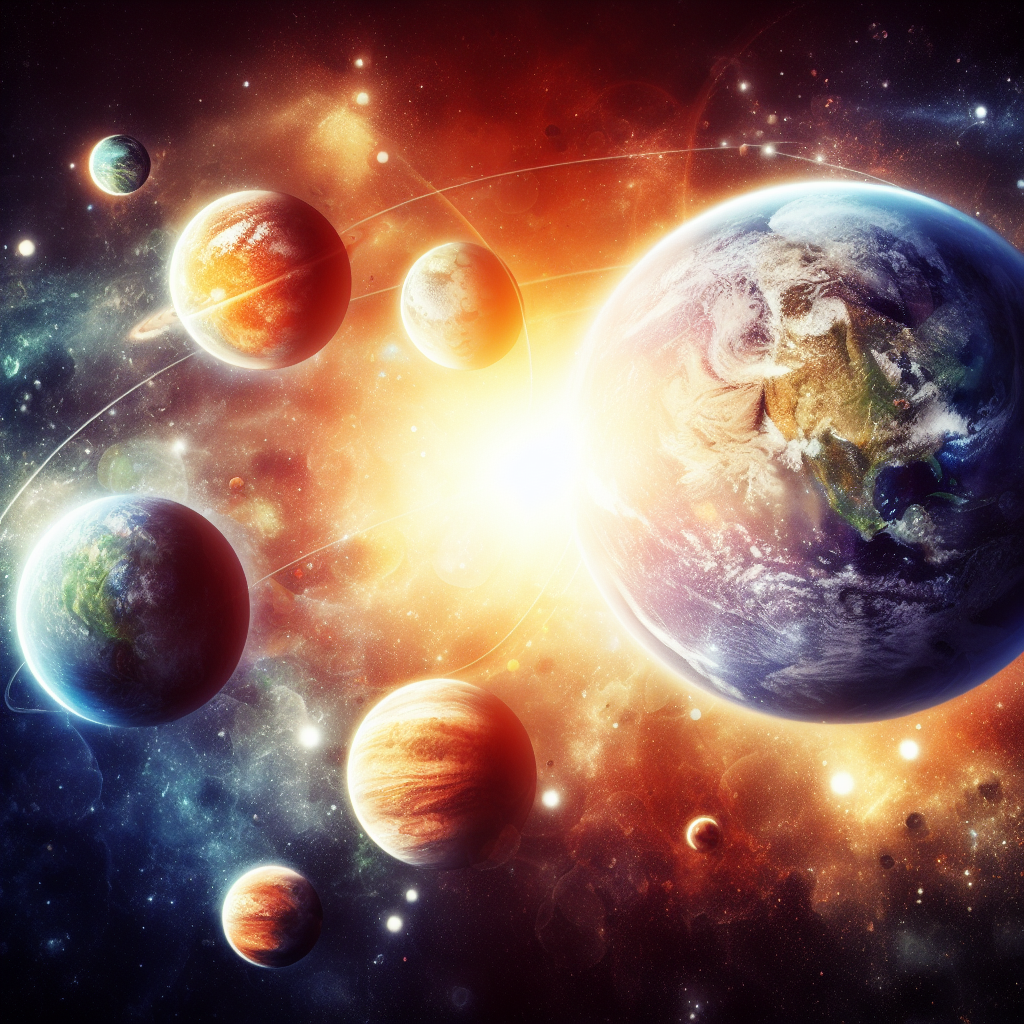The universe is vast and holds countless celestial wonders, but within our own solar system, there are eight confirmed planets that have captivated humanity for millennia. Each one possesses unique characteristics and mysteries, inviting us to explore and learn more about their diverse worlds.
1. Mercury: The closest planet to the Sun, Mercury bears the brunt of its scorching heat. Its cratered surface resembles the Moon, and its thin atmosphere offers little protection from the harsh environment. Despite its challenges, Mercury holds clues to the formation of our solar system.
2. Venus: Often called Earth’s twin, Venus is shrouded in a thick, toxic atmosphere that traps heat, creating a runaway greenhouse effect. Its surface is a scorching desert, and its volcanic activity hints at a dynamic interior. Understanding Venus helps us appreciate the delicate balance that sustains life on Earth.
3. Earth: Our home planet, Earth, stands out as a vibrant oasis in the vastness of space. Its liquid water, diverse life forms, and dynamic magnetic field make it a unique haven. Studying Earth’s intricate systems helps us understand the potential for life on other planets.
4. Mars: The Red Planet, Mars, has long captured our imagination with its rusty hues and potential for harboring life. Its ancient riverbeds and polar ice caps suggest a wetter past, and recent missions have found evidence of methane, a possible indicator of biological activity. Understanding Mars’s history could shed light on our own planet’s evolution.
5. Jupiter: The king of the planets, Jupiter, is a gas giant with a swirling atmosphere and a Great Red Spot, a storm larger than Earth. Its immense gravity shapes the solar system, influencing the orbits of asteroids and comets. Studying Jupiter’s moons, some with potential for oceans beneath their icy surfaces, expands our understanding of planetary diversity.
6. Saturn: Known for its stunning rings, Saturn is another gas giant with a mesmerizing beauty. Its icy moons, like Titan with its thick atmosphere and liquid methane lakes, are like miniature worlds, offering glimpses into the possibilities of exotic life forms. Studying Saturn’s rings and moons helps us understand the formation and evolution of planetary systems.
7. Uranus: Tilted on its side and shrouded in a faint blue haze, Uranus is an icy giant with a unique composition. Its atmosphere is a mix of hydrogen, helium, and methane, and its rings are composed of dark, dusty particles. Studying Uranus challenges our understanding of planetary formation and the conditions necessary for life.
8. Neptune: The farthest confirmed planet in our solar system, Neptune, is a world of extreme cold and darkness. Its powerful winds whip around its icy core, and its Great Dark Spot rivals Jupiter’s storm in size. Studying Neptune pushes the boundaries of our technology and expands our knowledge of the outer reaches of our solar system.
The Earth VS other Planets
Among the eight planets currently gracing our solar system, Earth stands out as a beacon of life and possibility. While each celestial body possesses its own captivating allure, Earth’s unique blend of features sets it apart as a cradle of vibrant ecosystems and, as far as we know, the only known harbor of life in the universe.
1. Liquid Water: Earth is the only planet in our solar system known to have liquid water flowing freely on its surface. This seemingly ordinary substance is the elixir of life, playing a crucial role in biological processes and shaping our planet’s dynamic weather patterns. From the vast oceans to the tiniest dewdrops, water sculpts Earth’s landscapes and sustains its diverse biosphere.
Earth with water
In contrast, Venus, our closest neighbor, is shrouded in a thick, scorching atmosphere that traps heat, preventing water from existing in liquid form. Mars, once thought to have hosted oceans, now possesses only frozen water at its poles and hints of underground brines. The other planets, like the gas giants Jupiter and Saturn, are simply too hot or lack the necessary conditions for liquid water to exist.
2. Habitable Zone: Earth’s location in the solar system is just right. Nestled comfortably in the “Goldilocks zone,” a region around the Sun where temperatures are neither too hot nor too cold, Earth receives the perfect amount of solar energy to sustain liquid water and, consequently, life. Mercury, scorched by the Sun’s proximity, and Neptune, banished to the frigid outer reaches, exemplify the stark contrast of planetary placements.
3. Plate Tectonics: Earth’s surface is not stagnant. Its rocky shell is divided into tectonic plates that constantly churn and shift, driven by the heat radiating from its molten core. This dynamic process not only shapes mountains and triggers earthquakes but also plays a crucial role in regulating Earth’s climate and recycling essential nutrients for life. Other planets, like Mars, have comparatively static surfaces, lacking the internal dynamism that shapes Earth’s ever-evolving landscapes.
4. Magnetic Field: Earth is shielded by a powerful magnetic field generated by the swirling motions of its molten core. This invisible shield deflects harmful charged particles from the Sun and cosmic rays, protecting life on the surface from the harshness of space. Venus, lacking a strong magnetic field, is constantly bombarded by solar radiation, while Mars’s weak magnetic field offers only partial protection.
5. Diverse Biosphere: Earth is teeming with life in a kaleidoscope of forms, from single-celled organisms in the deepest oceans to the towering giants of the rainforest. This biodiversity is a testament to the planet’s ability to foster and sustain a wide range of adaptations and ecological niches. In contrast, the other planets in our solar system, as far as we know, are barren wastelands devoid of the vibrant tapestry of life found on Earth.
These are just a few of the many factors that make Earth unique in our solar system. While each planet holds its own scientific intrigue and mysteries waiting to be unraveled, Earth’s combination of liquid water, habitable location, dynamic geology, protective magnetic field, and thriving biosphere make it a truly extraordinary place in the vast cosmic canvas.
As we continue to explore the universe, the search for life beyond Earth intensifies. But for now, our own planet stands as a precious anomaly, a cosmic oasis where life flourishes in all its breathtaking diversity. It’s a reminder of the delicate balance that sustains our existence and a call to protect this fragile blue marble we call home.










